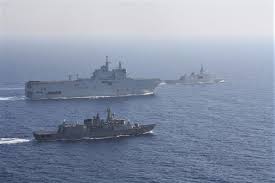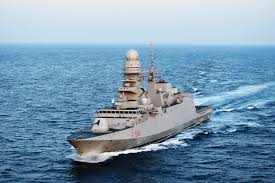Stamp: Sailor, Soviet Navy Flag and Cruiser "Aurora" (Soviet Union, USSR 1928)
Sailor, Soviet Navy Flag and Cruiser "Aurora" (Soviet Union, USSR 1928)
15 February (Soviet Union, USSR ) within release 10th Anniversary of Red Army goes into circulation Stamp Sailor, Soviet Navy Flag and Cruiser "Aurora" face value 14 Russian kopek
| Stamp Sailor, Soviet Navy Flag and Cruiser "Aurora" in catalogues | |
|---|---|
| Michel: | Mi: SU 355U |
| Yvert et Tellier: | Yt: SU 413a |
| Stanley Gibbons: | Sg: SU 530a |
| Unificato: | Un: SU 413a |
Stamp is vertical format.
Issued in sheets of 100 (10 x 10) stamps.Also in the issue 10th Anniversary of Red Army:
- Stamp - Red Army Soldier face value 8;
- Stamp - Sailor, Soviet Navy flag and cruiser "Aurora" face value 14;
- Stamp - Cavalryman face value 18;
- Stamp - Airman face value 28;
- Stamp - Airman face value 28;
- Stamp - Red Army Soldier face value 8;
- Stamp - Airman face value 28;
- Stamp - Cavalryman face value 18;
- Stamp - Sailor, Soviet Navy Flag and Cruiser "Aurora" face value 14;
Stamp Sailor, Soviet Navy Flag and Cruiser "Aurora" it reflects the thematic directions:
An anniversary is the date on which an event took place or an institution was founded in a previous year, and may also refer to the commemoration or celebration of that event. For example, the first event is the initial occurrence or, if planned, the inaugural of the event. One year later would be the first anniversary of that event. The word was first used for Catholic feasts to commemorate saints. Most countries celebrate national anniversaries, typically called national days. These could be the date of independence of the nation or the adoption of a new constitution or form of government. The important dates in a sitting monarch's reign may also be commemorated, an event often referred to as a "Jubilee".
An army, ground force or land force is an armed force that fights primarily on land. In the broadest sense, it is the land-based military branch, service branch or armed service of a nation or country. It may also include aviation assets by possessing an army aviation component. Within a national military force, the word army may also mean a field army.
A flag is a piece of fabric (most often rectangular or quadrilateral) with a distinctive design that is used as a symbol, as a signaling device, or as decoration. The term flag is also used to refer to the graphic design employed, and flags have since evolved into a general tool for rudimentary signalling and identification, especially in environments where communication is similarly challenging (such as the maritime environment where semaphore is used). National flags are patriotic symbols with varied wide-ranging interpretations, often including strong military associations due to their original and ongoing military uses. Flags are also used in messaging, advertising, or for other decorative purposes. The study of flags is known as vexillology, from the Latin word vexillum, meaning flag or banner.
A navy, naval force, military maritime fleet, war navy, or maritime force is the branch of a nation's armed forces principally designated for naval and amphibious warfare; namely, lake-borne, riverine, littoral, or ocean-borne combat operations and related functions. It includes anything conducted by surface ships, amphibious ships, submarines, and seaborne aviation, as well as ancillary support, communications, training, and other fields.
A warship or combatant ship is a ship that is used for naval warfare. Usually they belong to the navy branch of the armed forces of a nation, though they have also been operated by individuals, cooperatives and corporations. As well as being armed, warships are designed to withstand damage and are typically faster and more maneuverable than merchant ships. Unlike a merchant ship, which carries cargo, a warship typically carries only weapons, ammunition and supplies for its crew.




